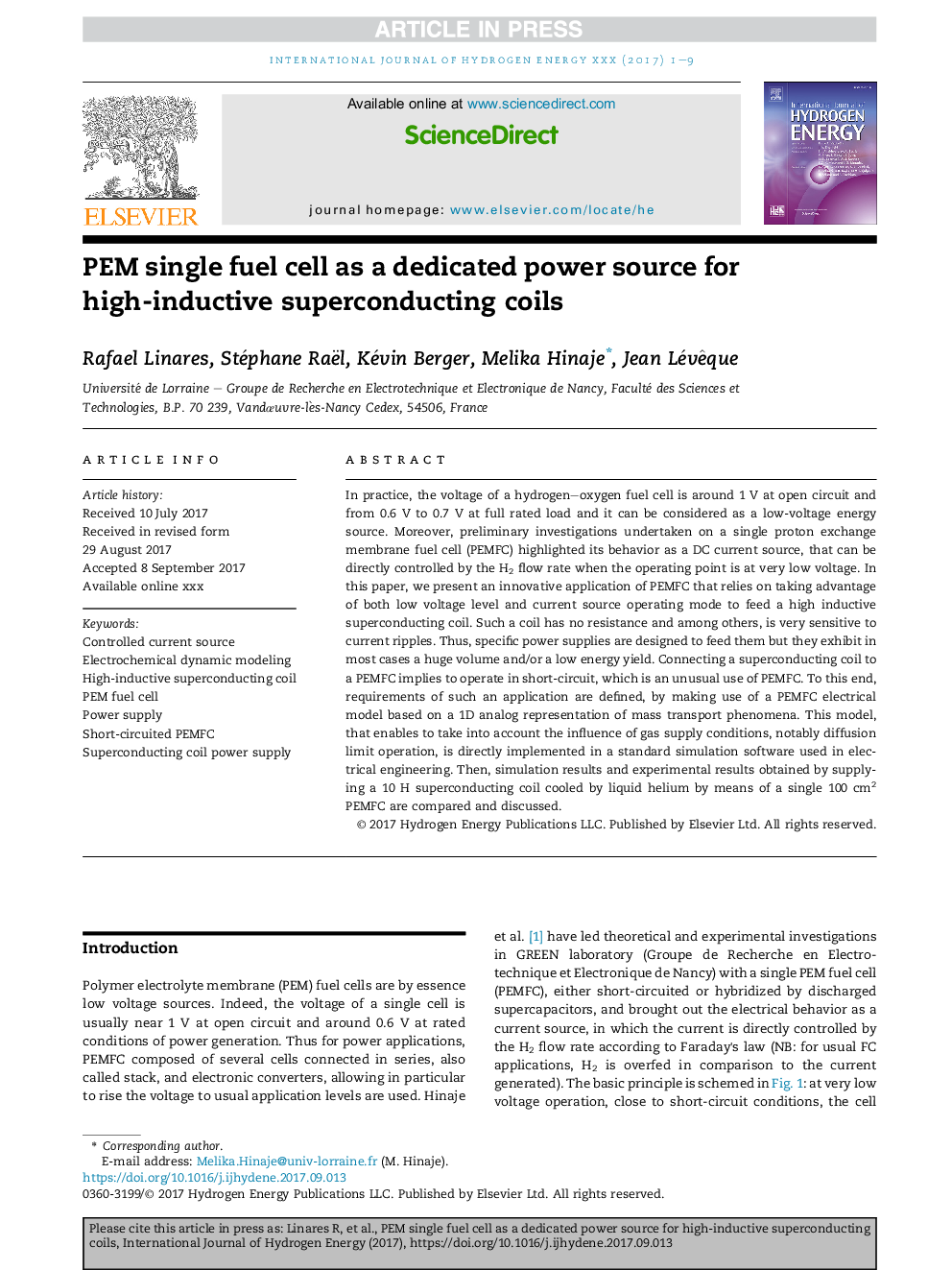| Article ID | Journal | Published Year | Pages | File Type |
|---|---|---|---|---|
| 7707181 | International Journal of Hydrogen Energy | 2018 | 9 Pages |
Abstract
In practice, the voltage of a hydrogen-oxygen fuel cell is around 1Â V at open circuit and from 0.6Â V to 0.7Â V at full rated load and it can be considered as a low-voltage energy source. Moreover, preliminary investigations undertaken on a single proton exchange membrane fuel cell (PEMFC) highlighted its behavior as a DC current source, that can be directly controlled by the H2 flow rate when the operating point is at very low voltage. In this paper, we present an innovative application of PEMFC that relies on taking advantage of both low voltage level and current source operating mode to feed a high inductive superconducting coil. Such a coil has no resistance and among others, is very sensitive to current ripples. Thus, specific power supplies are designed to feed them but they exhibit in most cases a huge volume and/or a low energy yield. Connecting a superconducting coil to a PEMFC implies to operate in short-circuit, which is an unusual use of PEMFC. To this end, requirements of such an application are defined, by making use of a PEMFC electrical model based on a 1D analog representation of mass transport phenomena. This model, that enables to take into account the influence of gas supply conditions, notably diffusion limit operation, is directly implemented in a standard simulation software used in electrical engineering. Then, simulation results and experimental results obtained by supplying a 10Â H superconducting coil cooled by liquid helium by means of a single 100Â cm2 PEMFC are compared and discussed.
Keywords
Related Topics
Physical Sciences and Engineering
Chemistry
Electrochemistry
Authors
Rafael Linares, Stéphane Raël, Kévin Berger, Melika Hinaje, Jean Lévêque,
